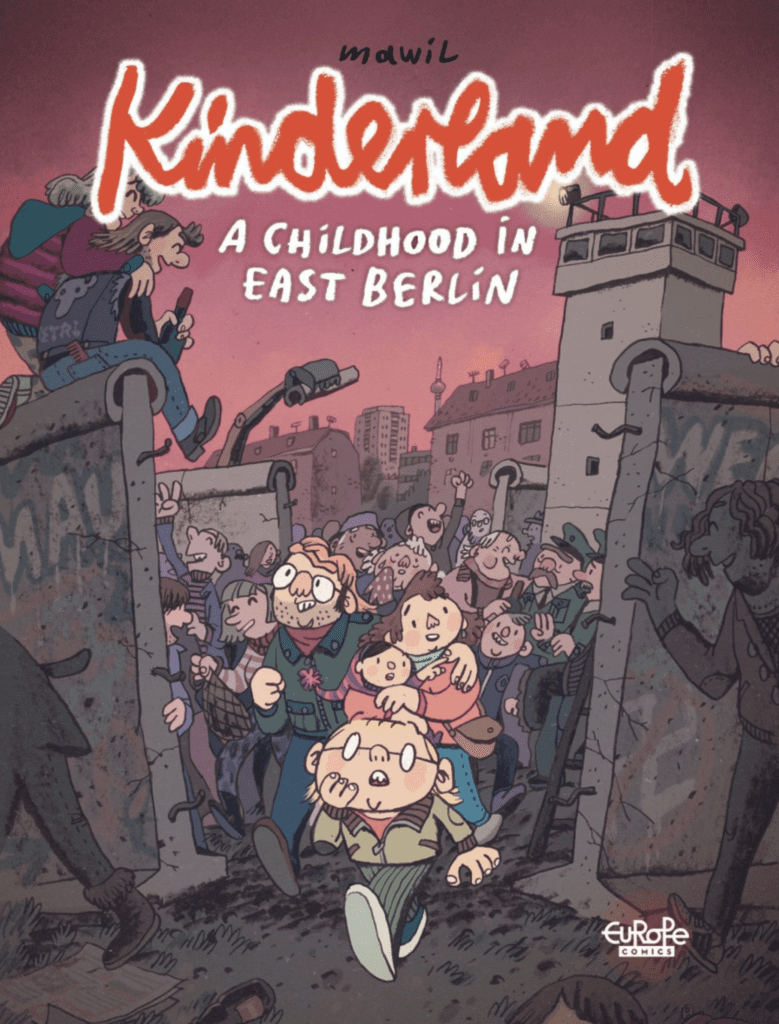Almost all children love comic books. What is better than reading through a book, which has decent pictures of heroes, animations, and what’s more a fantastic plot. Not only children, but even some adults are huge fans of comics.
When we talk about them probably the first thing that comes to our mind are comics from Marvel and DC. But the comic culture is well-developed in various European countries and the book, which we are going to talk about here is a German one called Kinderland.
Kinderland is one of the most notable German comics of recent years. Mawil’s graphic novel Kinderland was published on November 14, 2014, by The Berlin Publishing House Reprodukt, and in the same year, it received the main German prize in graphic literature – the Max & Moritz Prize, presented at the annual comic book salon in Erlangen.
Kinderland is a nearly three-hundred-page book with bright colorful graphics and an exciting plot. It is a funny and touching story about children’s friendship, difficulties of growing up, courage, honesty, and trust. And all this is happening against the background of life in East Germany in the last months before the fall of the Berlin Wall.
It should be mentioned that while the comic book is indeed one of the best ones in Germany of past years, it also costs a lot of energy and effort to the writers. The budget was also necessary which they managed to collect. At some point, it was also stated that the supposedly online casino industry in Germany was so involved in the process of comic-making that they decided to offer sponsorship for future projects. One of the most notable representatives in this industry Spinia Deutschland decided to offer investment opportunities. But right now no massive project is planned, considering the current situation in the whole world surrounding Covid-19.
The situation takes place in the German Democratic Republic in 1989. Modest bespectacled Mirco Watzke is studying in the 7th grade of the school in East Berlin. He is a diligent student, but in communication with peers, he has big problems. Mirco accidentally meets a new guy from a parallel class – a strange guy Torsten. A friendship is struck, which has yet to go through serious trials.
The sense of uncertainty of adolescence is amplified by the universal atmosphere of waiting for something that reigns around. The story is filled with small details typical of Germany in the late 1980s. These are household items – buses Ikarus, triangular bags of milk, audio cassettes, music Depeche Mode. But above all, it is the feelings of people who live in a dual reality – on the one hand ostentatious socialist propaganda, and on the other – the conversations of adults in the kitchens, secret viewing of Western TV channels and thirst for change.
Meanwhile, Mirco has an unexpected talent. He is extremely good at table tennis. This is an occasion to declare yourself in the collective of peers. He and Torsten decide to organize a school tournament, but everything is not so simple. They need to get the permission of teachers, fix a broken racket, ask parents, and rehearse the “deadly serve.” And when almost all the obstacles have been overcome, there is another big problem…
Mawil’s drawing style is light and expressive. The author perfectly conveys the emotions of the characters, the style of communication of teenagers, and the many children’s companies. The narrative then slows down in pages with no words, telling, for example, about going to church, or a trip to his grandmother, then repeatedly accelerated in dynamic scenes of fights on the ping pong.
The original drawing of this book, and the time described in it, evokes associations with the style of artists from the magazines of the GDR of that time. Those who grew up in the ‘80s may be familiar with the children’s magazine about the life of German pioneers, or the adult satirical magazine Eulenspiegel. There were wonderful cartoonists such as Henry Buettner, Heinz Jankofsky, and many other interesting authors. Mawil’s drawing is, of course, different, but these editions undoubtedly influenced him as an artist. And today he forms the style of modern German comics.
Another association is the comic Marzi by Marzena Sowa And Sylvain Savoia. There life in Poland in the mid-80s is shown through the eyes of a little girl. Daily children’s joys and sorrows of the main character take place against the background of global political changes.
In the text a lot of nuances, understandable only to the resident of Germany at that time – they had to be competently adapted to different languages so that it is easier for us to understand every detail without losing the color of the original.


